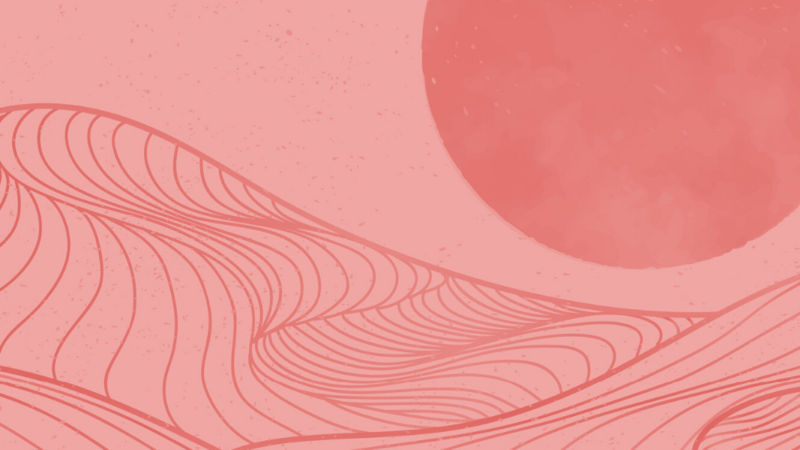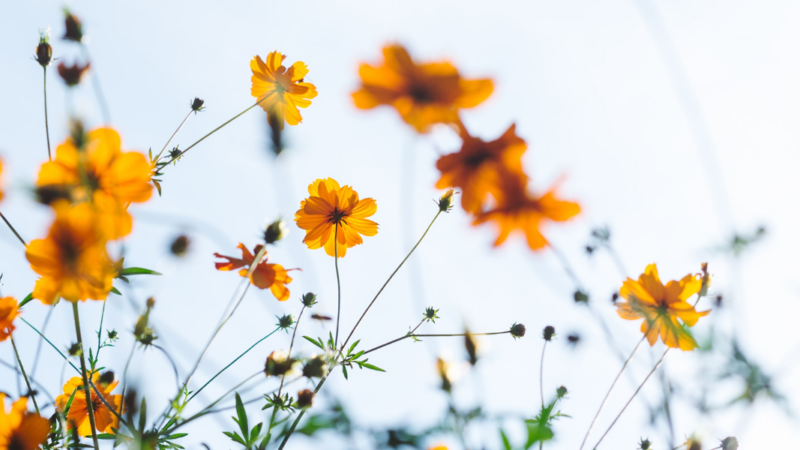Tips and Tools to Heal Our Relationship with Mother Earth
Reciprocity
Tending to the natural world is essential. We can no longer ignore or expect the Earth to just be there giving us all that we need, shutting out her cries. Her resources are limited. She is our mother, and she is burning, melting, and roaring in a call for help for us to tend to her needs. Animals are becoming extinct and others are abused and mistreated for profit, as are our trees—our sacred lungs here on Earth. We are meant to connect to the natural world as if it were a friend, a sister or brother, mother or father. We are all a part of the same Earth family. The trees need the air we exhale, yet we forget that we rely on them to breathe, as well. We forget, so easily, just how important this relationship is for our mere existence. Our connection is such a simple act, but we’ve completely lost our intimacy with the natural world as a collective and it’s begging for us to return to this harmonious kinship.
The Earth is our mirror—the truest reflection for our collective. Its self-destruction and decay shows us the separation we’ve created with it, with ourselves, with all that is Sacred, and with each other. When she burns, it mirrors the repressed anger we are holding from not meeting the needs of our Spirit, for not listening to truth. Her polluted oceans reflect the pollution of our inner waters—our disrespect and dishonoring of the emotions and intuitive wisdom of the feminine. The remedy is actually quite simple: conscious communication, love, and connection can help restore this balance. Once we each form a relationship with our elemental allies, our awareness will shift to honoring and protecting, and change the way we relate to the natural world as a whole, just like a connection with any growing relationship. Our future depends on how we tend to the Earth today.
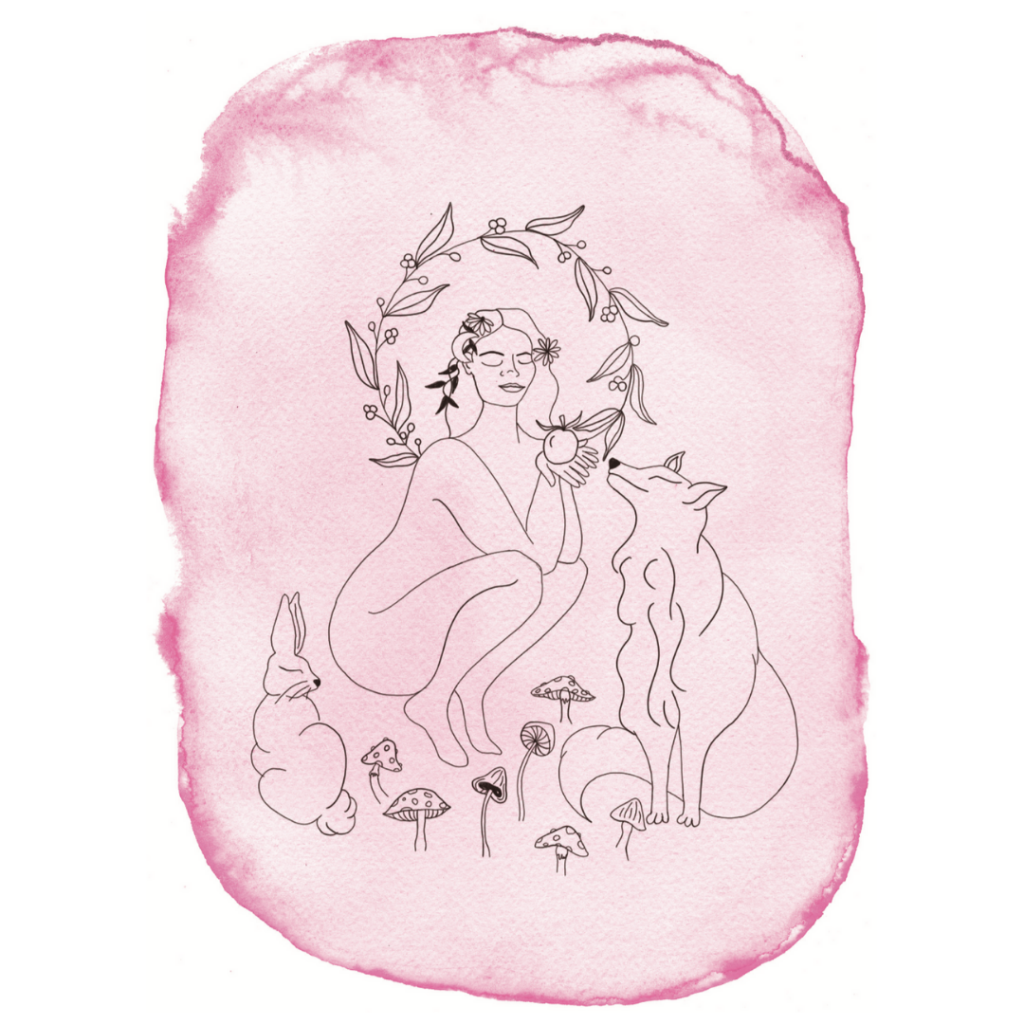
Working with the Land
When working with the natural world in our healing, we also must cultivate a relationship with the land that supports us where we live. We thrive when we are connected to and work with the land that holds us. Simple ways to do this include:
- Spend time with the land. Listen to it. Get to know its natural features, its seasonal blossoms and cycles.
- Research and recognize its indigenous origins. Who lovingly tended to the land before you? How can you honor these people? Are they still active in your community? How can you support them?
- Join a local land conservation group.
- Try to source fresh herbs in your community or in the wild, instead of bought in plastic imported to your grocery store. Look for community gardens, farmers markets, CSAs, or even plant them yourself! For dried herbs and plants not native to your bioregion, check out your local apothecary to support small Earth-conscious businesses. Always ask where they get their herbs and if they are sustainably harvested or organic.
- Plant walks are also a great resource for learning how to spot medicine in the wild so you can forage yourself, and they can also teach you more about what grows near you. Find a local herbalist who you resonate with and support them.
Ways to Further Reciprocate:
- Talk to the trees like a friend. Ask them for guidance and support and listen with care and respect.
- Plant trees and flowers. Reforest and replant. Revive our dying plant species.
- Stop utilizing single use plastic, especially if you have a company that sells products. Our oceans are drowning in plastic and our sea creatures are suffering. We
are disrupting balance because of our addiction to consumerism. Plastic does not disappear and most of it doesn’t get recycled. You can nowadays find a plastic-free alternative for almost anything you could ever need with a little bit of conscious attention. Do your research and be mindful of your plastic consumption. Choose consciousness over convenience, the larger vision over a quick fix. - With everything you take from the Earth or that is made of the Earth, say a simple thank you before using or consuming it.
- Say intentional prayers and blessings for the Earth and her healing.
- Withdraw your support from companies and groups that are not in support of the Earth’s health and sacredness— companies that use unsustainably harvested resources or unnecessary plastic, those that engage in unethical farming, and fast fashion.
- Share with friends and family how to be more eco-conscious. Does your mom recycle? Is your brother still using plastic straws? Does your best friend need an iced coffee served in a plastic cup every day or can they bring their own cup to the coffee shop? Gently offer suggestions to support the Earth whenever you see fit.
- Support companies that focus on Earth connection and protection. We vote with our dollars and money is energy. Give your energy to those supporting the Earth.
This is an excerpt from Tending to the Sacred: Rituals to Connect with Earth, Spirit, and Self by Ashley River Brant.
 Ashley River Brant is a multidimensional artist and feminine healer bringing her medicine through as the creator of Soul Tattoo®, a ceremonial intuitive tattooing modality, as well as with film photography, illustration, writing, as the host of Weaving Your Web podcast, and through her online courses. Ashley uses her gifts of mediumship and connections to the loving spirits of the natural world to offer a feminine voice of healing expression for collective transformation in all her work. Ashley’s focus is to assist her clients, and all who are drawn to her work, in awakening to a new wave of feminine power, attuned to the mystery, honoring the creative and intuitive power within us all, and embodying it with grounded presence and purpose, so that we may all heal, open our hearts to the sacred, and align with our authentic expression and soul’s true essence. Ashley will be releasing her first book and first oracle deck with Sounds True in 2021.
Ashley River Brant is a multidimensional artist and feminine healer bringing her medicine through as the creator of Soul Tattoo®, a ceremonial intuitive tattooing modality, as well as with film photography, illustration, writing, as the host of Weaving Your Web podcast, and through her online courses. Ashley uses her gifts of mediumship and connections to the loving spirits of the natural world to offer a feminine voice of healing expression for collective transformation in all her work. Ashley’s focus is to assist her clients, and all who are drawn to her work, in awakening to a new wave of feminine power, attuned to the mystery, honoring the creative and intuitive power within us all, and embodying it with grounded presence and purpose, so that we may all heal, open our hearts to the sacred, and align with our authentic expression and soul’s true essence. Ashley will be releasing her first book and first oracle deck with Sounds True in 2021.
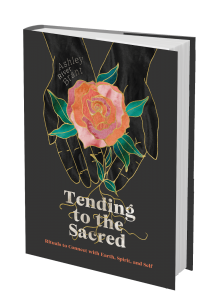
Learn More
Sounds True | Amazon | Barnes & Noble | Indiebound | Bookshop
How to Mental Stack Your Way to a New Chapter in Life
Most people feel trapped in a thousand ways. But more often than not, this sense of entrapment us into putting our heads down and getting the things we are expected to get done, done. We can’t often see the entrapment, especially if it looks like the result of our own choices in life. But were they truly our own choices? What if some of the choices we made in life have never really been ours to begin with?
I want to take us back a little. Back to when we were younger. When we had to rely on the wisdom of our elders, and those who have been in this life much longer than us. In my upcoming book Invisible Loss, I write about that time in our lives when we were at our most rebellious:
Disobedience—as a child, as a teen, as an adult in the world of work and home—is an act that creates invisible suffering. We learn to survive that repeated pattern of being commanded by our elders to be “good.” In order to be good and obey, we may create a life closer to that command but further away from our Original Self. We may work hard trying to be good, trying to please and fit into the mold created for us, but that only helps to build our Waiting Room life.
But time in the Waiting Room doesn’t need to last forever. And you don’t have to die inside it. There are parts within you that can bring forth a life worthy of your human existence. Places within yourself that have no shame.
As long as we have been alive, creating a life that aligns closest to the wishes of our caregivers and protectors blinds us to the life that we could choose for ourselves. That life is completely hidden even if we think we know our wishes. Often, only when we go through tragic or invisible losses, do we start to question those choices. Dare I say, these moments are opportunities to exit the loop of being “good.”
It is time to interrupt our regular transmission. It is time to be clear when it comes to what it is we are trying to communicate to the people in our lives. It starts from no longer trying so hard to fit into the mold that was created for us. No matter how old we are, we can always break outside this mold and align our choices with our true values and desires.
This is not an easy task. I understand that. At the core of my book, Invisible Loss, I’ve created tjos easy practice to help set you on the right path to your Original Self. I call it Mental Stacking:
What Is Mental Stacking?
Mental Stacking is the ability to intentionally layer your thoughts to replace unconscious, Survivor-based
thinking with Wisdom-based thinking. In doing so, these Wisdom-based thoughts can more easily be converted into real-life action. This Stacking practice allows you to access your true and authentic self (your Original Self) and entrust it with the controls of your life. Here is what a basic Stack looks like:
- The Cleanse: Transcribing the automatic, routine-based, unconscious thoughts. Write them down. Don’t stop writing until you feel you are done.
- The Pattern: Subtracting from that first layer the thoughts of fear and doubt. Once you write everything you are feeling and thinking down, read it back to yourself and find a sentence or two that comes from a place of fear or doubt. For example, somewhere in your long cleanse you may find yourself saying: “I feel trapped in my marriage and I don’t dare tell anyone about it because he is the nicest guy. All of my friends always tell me how lucky I am to be married to someone who takes such good care of me.”
- The Reframe: Writing the consciously reframed thought layer in the Stack. Take that sentence and reframe it. For example: “I feel trapped in my marriage and feel ashamed for feeling this way because my partner is such a good guy,” to, “even though I may feel shame about how I feel, I need to share these feelings with my partner even though it may not be expected or understood. This is my life, after all.”
- The Plug-In: Translating the reframed thought into action. Once you have that reframed thought, think of a low-risk action you can take that can stem from that newly scripted thought. For example, you can suggest to your partner to go for dinner at a brand new place where you can bring up what is on your mind in a new environment. You can act on your right to express yourself regardless of what the response might be or how others view your situation.
Your Mental Stack leads you to a specific next step that may not always be easy to see without the power of each previous layer in the Stack.
Here’s to a great new chapter ahead,
Christina Ramussen
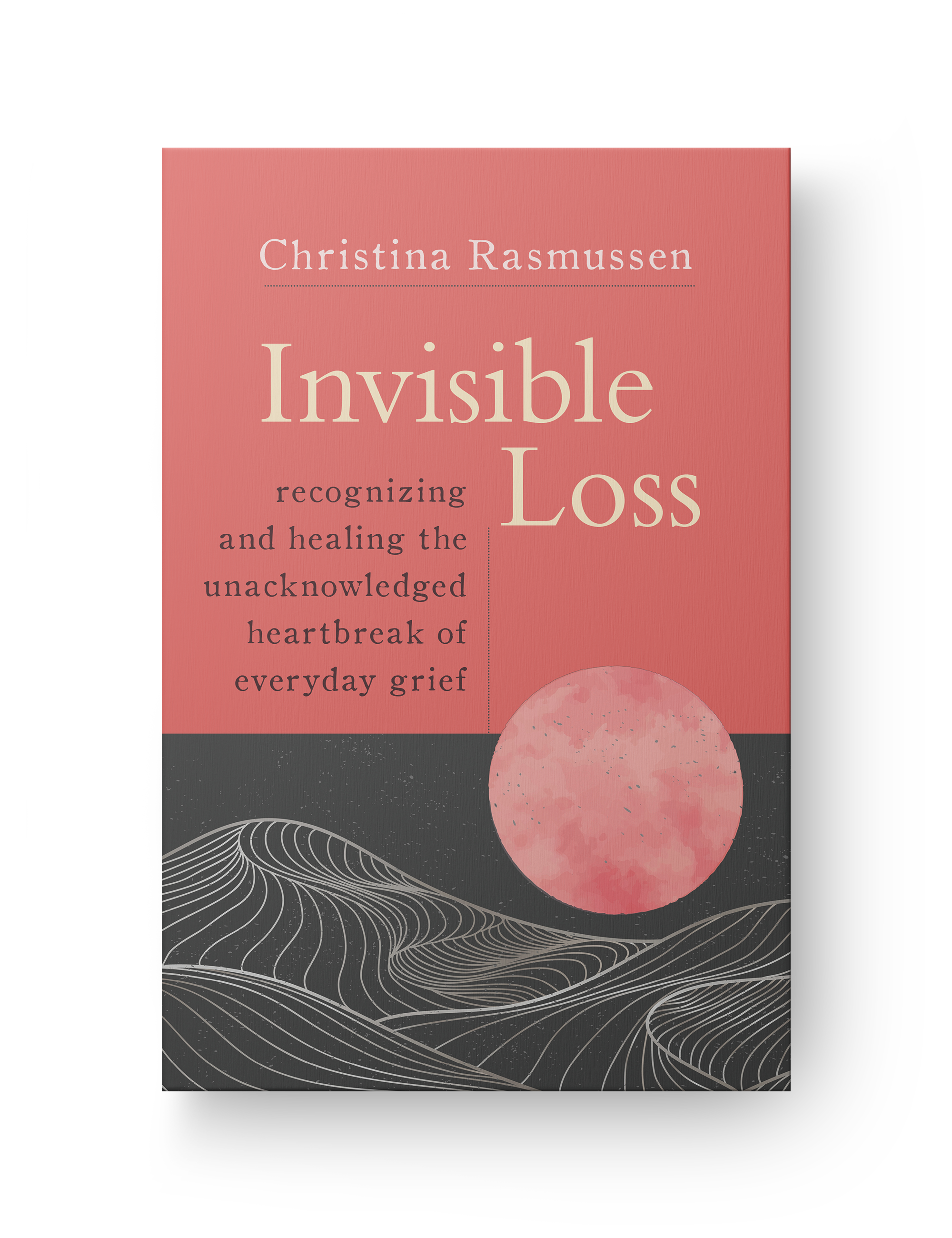
Invisible Loss
Amazon | Barnes & Noble | Bookshop | Sounds True

Christina Rasmussen is an acclaimed grief educator and the author of Second Firsts and Where Did You Go? She is the founder of the Life Reentry Institute and has helped countless people break out of what she coined the “waiting room” of grief to rebuild their lives through her Life Reentry® Model, a new paradigm of grief, based on the science of neuroplasticity. She lives in Austin, Texas. For more, visit christinarasmussen.com.
Author photo © Marc Olivier Le Blanc
How to Bring Your Fear Out of Your Shadow
 If you’re looking for genuine transformation, you need look no further than your fear. For in it there exists not only an abundance of trapped energy, but also the very testing and challenge that we need in order to live a deeper, more authentic life.
If you’re looking for genuine transformation, you need look no further than your fear. For in it there exists not only an abundance of trapped energy, but also the very testing and challenge that we need in order to live a deeper, more authentic life.
The dragon’s cave awaits. However shadowed it may be, you know where it is, and you can see it more clearly as you move toward it, step by conscious step, bringing the fearful you into your heart, with your adrenaline not so much fueling your fear as your courage and investigative excitement.
The following guide can help you confront the dragons of fear as you navigate through your own unique shadow.
Get to know your fear. Study it, approach it, become more curious about it, turn on the lights. Get to know it even better. Go for an inside look at it, paying close attention to all of its qualities, static and otherwise. The more familiar you are with your fear, the less the chances are of you letting it control you.
Get to know its roots. The expression of your fear might be outside your shadow, but its origins, its foundational roots, may be in your shadow. You may, for example, begin with an obvious case of worrying and then drop below that to an anxiety that has been with you since you were young. Underlying that may be a survival-based panic that’s anchored in an even earlier time. Spelunk your depths.
Stop shaming yourself for being afraid. Everyone has fear, whether they admit it or not. The Dalai Lama has said he sometimes feels anxious. The more we shame ourselves—and are shamed—for being afraid, the more our fear will be driven into our shadow. Fear is natural, but what we do with it may not be so natural, such as when we pathologize it.
Open your heart to the frightened child in you. Develop as much compassion as possible for the fearful you. (This compassion comes from the you who is not caught in fear.) Don’t tell that child not to be afraid or that there’s nothing to be afraid of. Instead, be caring and protective enough to hold such fearfulness the same way you would a trembling infant. Remember that as a child you needed not just love but also protection. Being a good parent to your inner child will decentralize your fear so that instead of it holding you, you are holding it.
Instead of giving your fear higher walls, give it bigger pastures. Doing so expands you. This makes more room for your fear to shed some of its constrictedness and transition into excitement, allowing you more access to contexts other than that of fearfulness. Fear contracts our breathing, squeezing and gripping us, as if we’re stuck in a too-small enclosure, unpleasantly walled in. Giving our fear more room, more space, doesn’t make it worse but rather spreads out its energies, diluting its intensity and reducing the pressure.
Think of your fear as excitement in disguise. Where there’s fear, there’s excitement close by. Make a hard fist, tightly balled up, and imagine this is your fear. Then relax your hand, letting your fingers spread wide; this is your excitement, open and available. It’s the same energy, the same adrenaline, but the context has shifted dramatically. You weren’t trying to get excited; simply relaxing your fist freed up your energy. The fear initially is tightly held in the shadows; making conscious contact with it allows it to begin uncurling, to let some light in.
Keep your anger on tap. Take advantage of the fact that fear and anger are very closely related, being basically the same biochemically. Where fear contracts us, anger expands us, for better or worse. In fear we either tend to flee or freeze; we often feel paralyzed. But in anger we thrust forward, leaning into what angers us; our energies mobilize for taking strong stands. Some anger is a mask for fear, but plenty of anger is fearless fire, flaming through relational deadwood and obstacles to well-being, providing a torch that can illuminate even the darkest corners of our shadow.
Separate the content of your fear from its energy. When fear gets into our mind, we spin out storylines that can keep us in dark places internally, thought-cages packed with fearful ideas and expectations. When this happens, don’t think about your fear. Instead, bring your awareness as fully as possible to your body. Sense where in your body the energy of fear is strongest, taking note of the sensations there and their detailing. Stay with this body awareness, sensing instead of thinking, until you feel more stability. Soften your belly and chest, feeling how your breathing moves your entire torso, keeping some awareness on the arrival and departure of each breath.
Practice courage. Courage doesn’t mean we’re fearless but that we’re going ahead regardless of whatever fear we’re feeling. Start with small acts of courage, doing things that are a bit scary, a bit daunting. This could mean having a cold shower when you’re feeling overly sluggish, or saying no to a lunch date with a friend who you know you’ll find draining to be around today. Honor your everyday courage; sometimes getting out of bed asks more from us than does parachuting from a plane.
As you practice courage, more and more of your fearfulness will shift into resolve and action. Some of it may remain, keeping you on your toes. And some of it may morph into the kind of anger that helps fuel needed stands. Remember that practicing courage helps immensely in facing and entering your shadow.
Excerpted from Bringing Your Shadow Out of the Dark: Breaking Free from the Hidden Forces That Drive You by Robert Augustus Masters.

 Robert Augustus Masters, PhD, is an integral psychotherapist, relationship expert, and spiritual teacher whose work blends the psychological and physical with the spiritual, emphasizing embodiment, emotional literacy, and the development of relational maturity. He is the author of thirteen books, including Transformation through Intimacy and Spiritual Bypassing. For more information, visit robertmasters.com.
Robert Augustus Masters, PhD, is an integral psychotherapist, relationship expert, and spiritual teacher whose work blends the psychological and physical with the spiritual, emphasizing embodiment, emotional literacy, and the development of relational maturity. He is the author of thirteen books, including Transformation through Intimacy and Spiritual Bypassing. For more information, visit robertmasters.com.
Buy your copy of Bringing Your Shadow Out of the Dark at your favorite bookseller!
Sounds True | Amazon | Barnes & Noble | Indiebound

Victory! A Poem
Victory!
By Jeff Foster
You don’t have to be the best.
You don’t have to win.
You only have to be yourself.
You only have to be real.
And speak from the heart.
And know that you have the right to see how you see,
and think how you think, and feel what you feel,
and desire what you desire.
You don’t have to be a success in the eyes of the world
and you don’t have to be an expert on living.
You only have to offer what you offer,
breathe how you breathe, make mistakes and screw
up
and learn to love your stumbling and say the
wrong thing
and stop worrying so much about impressing anyone
because in the end you only have to live with yourself
and joy is not given but found in the deepest
recesses of your being
so there can be joy in falling and joy in making
mistakes
and joy in making a fool of yourself and joy in
forgetting joy
and then holding yourself close as you crumble to
the ground
and weep out the old dreams.
Joy is closeness
with the one you love:
You.
You don’t have to be the best.
You really don’t have to win.
You only have to remember this intimacy with
the sky, the nearness of the mountains and feel the sun
warming your shoulders and the nape of your neck
and know that you are alive,
and that you are a success at being alive,
and that you have won already,
and you are victorious already,
without having to prove
a damn
thing.
To anyone.
This poem is excerpted from You Were Never Broken: Poems to Save Your Life by Jeff Foster.
 Jeff Foster shares from his own awakened experience a way out of seeking fulfillment in the future and into the acceptance of “all this, here and now.” He studied astrophysics at Cambridge University. Following a period of depression and physical illness, he embarked on an intensive spiritual search that came to an end with the discovery that life itself was what he had always been seeking.
Jeff Foster shares from his own awakened experience a way out of seeking fulfillment in the future and into the acceptance of “all this, here and now.” He studied astrophysics at Cambridge University. Following a period of depression and physical illness, he embarked on an intensive spiritual search that came to an end with the discovery that life itself was what he had always been seeking.
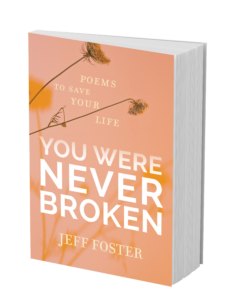
Learn More
What Are Nocturnal Meditations?

Many people know about meditating during the day, but few are aware of the “nocturnal meditations.” They’ve been around for thousands of years, tucked away under the blanket of darkness. Until recently, the nocturnal practices have been secret, deemed too subtle for the West. But with the mindfulness revolution in full swing and meditation now in the public domain, these “dark” practices are finally coming to light in the modern world. What surprises most people is how deep and vast these nocturnal meditations are—and how applicable to daily life.
The practices start with lucid dreaming, which is when you wake up to the fact that you’re dreaming while still remaining in the dream. Once it was scientifically proven in 1975, lucid dreaming has gained traction in the West. Initially, lucid dreaming isn’t much of a meditation. Most people use it to indulge their fantasies—to fulfill their wildest dreams in the privacy of their own mind. At this entry level, lucid dreaming is the ultimate in home entertainment, where you become the writer, producer, director, and main actor in an Academy Award-winning production of your own mind.
But the higher levels of lucid dreaming have extraordinary psychological and even physical benefits. You can transform nightmares, rehearse things, resolve interpersonal issues, even improve athletic performance. Neuroscience has shown that you can use your mind to change your brain (neuroplasticity), and modern dream research continues to show that you can use your dreaming mind to enhance a host of daily psychological and physical activities. Lucid dreaming at this higher level is like going to night school.
With some proficiency in lucid
Dream yoga, like lucid dreaming, progresses from beginning to advanced stages. A beginning yogi starts by addressing the question, “What are dreams made of?” They’re made of your mind. So, by working with your dreams at this refined level, you’re working to transform your mind. One early stage of dream yoga involves transforming the objects in your dreams, like changing a dream flower to a dream chair. In so doing, one discovers the malleable nature of mind and the truth of the saying, “Blessed are the flexible, for they are never bent out of shape.” This is the “yoga” or “stretching” part of dream yoga, which develops increased pliability of mind.
One amazing quality of both lucid dreaming and dream yoga is that the benefits of what you do in your dreams don’t stay tucked into the nighttime mind. By changing a flower into a chair in your dreams (not as easy as it sounds!), you realize you can change anger into compassion in your life. In other words, your emotional states are not as solid as you think. They’re essentially as solid as a dream, and therefore as workable.
At higher levels of dream yoga, you use the “example dream” or “double delusion” of the nighttime dream to wake you up from the “real dream” or “primary delusion” of daily life—which is precisely what the Buddha did. You eventually come to the shattering conclusion that this is a dream. When seen properly—when you’re lucid to it—your waking reality is no more concrete than a dream. So a dream yogi lives by the maxim, “This is a dream; I am free; I can change.” It’s a liberating wake-up call, with profound implications for all of life.
For most people, lucid dreaming and dream yoga are enough. But for those wanting to go to “graduate school,” one can advance into sleep yoga (related to yoga nidra in Hinduism). As incredible as it may sound, this is when you learn how to become lucid in deep, dreamless sleep. In Buddhism this is called “luminosity yoga” and adheres to the teaching that fundamentally there is no darkness within—only light unseen. Sleep yoga turns on this nightlight, a luminosity so radiant that it eventually illuminates even the day. Scientists are currently trying to prove this outrageous claim with advanced meditators and dream yogis.
“Lucidity” is a code word for awareness. So, by working with any of these three practices, you’re working to cultivate greater awareness. And what doesn’t benefit with more awareness? All three of these practices engage the principle of bi-directionality, which is all about opening a two-way street between the daytime and nighttime mind. What we do during the day affects how we sleep and dream; and what we do when we sleep and dream affects how we live during the day. By becoming lucid to our dreams and to dreamless sleep, we’re secretly becoming more lucid or aware of our daily lives. So lucid dreaming leads to lucid living.
As fruitful as these three practices are, there is one final step for those wanting to take the deepest dive. With some proficiency in sleep yoga, one can advance into bardo yoga (“gap” yoga), which is when the darkness of sleep is used to prepare for the darkness of death. In Greek mythology, Thanatos (the god of death) and Hypnos (the god of sleep) aren’t just brothers—they’re twins. Death and sleep are intimately related. In Buddhism, death is referred to as “the dream at the end of time.” So bardo yoga, which is a Tibetan contribution, engages the tenet that dreamless means formless, and formless means deathless. Bardo yoga therefore introduces you to your formless/deathless nature—to who you really are. It points out the deepest part of you that doesn’t get old, sick, or die. Bardo yoga is a “dead end” practice that points out eternal life.
We spend a third of our lives in sleep. If you live to be 90, you’ve slept for 30 years. Imagine what you could do if you had even a fraction of that time. We spend 25% of our sleep time in dreams, which adds up to about a month a year. Think of what you could do if you added a month to each year! That’s real “overtime.”
The nocturnal meditations are cutting-edge practices. Neuroscientist Matthew Walker writes, “It is possible that lucid dreamers represent the next iteration in Homo sapiens’ evolution.” How evolutionary does that make lucid sleepers, let alone lucid “die-ers”? Do you want to be the first one on your block to take the lead in evolution? Then open your eyes to the dark, engage the nocturnal meditations, and discover the leading light within.

Andrew Holecek is the author of Dream Yoga: Illuminating Your Life Through Lucid Dreaming and the Tibetan Yogas of Sleep. He is also the founder of Night Club, an online platform that explores the nocturnal meditations and the science that supports them. Learn more about
Meditation with Eckhart Tolle
Is it possible for meditation to be utterly effortless? To experience the depths of being in any given moment of our lives—not just while we practice? Not only is it possible, explains Eckhart Tolle, but it is the very way we come to touch the essence of meditation.
With Meditation: Practicing Presence in Every Moment of Your Life, we join this treasured teacher as he discusses the many methods of meditation and their shared purpose: accessing the richness and power of pure presence.
In its deepest sense, meditation is never a means to an end. It is about fully being and honoring the entire range of our experience—what Eckhart calls saying yes. Whether you’re just starting a practice or looking to go deeper than ever before, Meditation offers vital insights for anyone eager to taste the fruits of this revered discipline.

